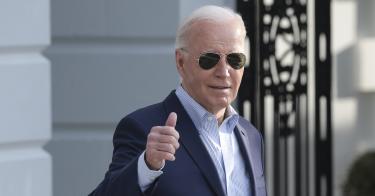The United States’ ability to deter its adversaries from attacking us and our closest allies and partners is at its lowest level since the end of the Cold War. China and Russia’s nuclear arsenals are growing unchecked, along with their ambitions, while America’s anemic response leaves it open to their coercion.
Despite the unambiguous and growing set of threats, the United States is failing to sustain its nuclear arsenal or prepare for the future. These failures will have grave consequences if not urgently addressed. President Joe Biden must make rebuilding the nation’s strategic nuclear deterrent a top priority.
A supposedly significant nuclear modernization process initiated by former President Barack Obama is currently underway. Unfortunately, that effort is not going well.
For example, the United States has not produced a new war reserve plutonium pit (a vital component necessary to create nuclear detonations) since 1989, and current efforts to restart the capability are years behind schedule. After not having built a new nuclear weapon or produced nuclear fissile material in almost three and a half decades, the U.S. must relearn how to enrich uranium for defense purposes.
>>> We’ve Made Progress on Our Nuclear Deterrent, but Much More Is Needed
In addition, the Sentinel missile, which should begin replacing the Minuteman III intercontinental ballistic missiles by the end of the 2020s, is struggling.
The Columbia-class ballistic missile submarine that is supposed to replace the Ohio-class, the core of America’s nuclear deterrent, “remains behind on producing design products—in particular, work instructions that detail how to build the submarine,” according to the Government Accountability Office.
If the United States is unable to field a credible nuclear deterrent by the 2030s—when China will likely reach parity with the U.S. and when the current ICBM and submarine force will age out—it is possible that America’s enemies will become even more emboldened than they are now and believe that during an acute crisis they can escalate to the nuclear threshold while facing a hobbled and undersized American nuclear deterrent.
To ensure that our enterprise is on schedule and will remain viable for the next half century, one person is essential: the president of the United States. Only the commander in chief can infuse the nuclear enterprise with the sense of urgency needed to field a credible deterrent in the 2030s. To this end, the president should:
Make deterrent modernization a top national priority. The president must make the case that nuclear weapons are the ultimate guarantor of their freedom and prosperity. He must make it known that while the nuclear arsenal remains effective today, it is aging, and the country must reinvest in the arsenal in the face of expanding Russian and Chinese nuclear arsenals.
Direct the National Nuclear Security Administration administrator to provide monthly briefings in the Oval Office on efforts to modernize the U.S. nuclear arsenal.
>>> The New American Nuclear Consensus—and Those Outside It
Direct the placement of more than one warhead on delivery vehicles of the ICBM force. The president should direct that the Sentinel ICBM be deployed with multiple independent reentry vehicle warheads as a hedge against adversaries’ expanding nuclear arsenals and that, beginning in 2026, the Air Force begin reinstalling MIRVs on Minuteman IIIs to assist as a mitigation strategy until the new capability comes online. Further, the Defense Department should examine how fast it can reopen and fill shuttered missile tubes in the ballistic missile submarine force.
Direct the production of new nuclear systems. The president should direct the Pentagon to initiate formal feasibility and utility studies for a variety of new nuclear systems, to include potentially hypersonic nuclear delivery systems, ground-launched options, and variants to existing air- and sea-launched cruise missiles.
Direct the Air Force to examine the feasibility of making the future ICBM force road-mobile to ensure that the United States fields a survivable second-strike capability.
Direct an enhanced global deterrence posture. The president should direct the secretaries of state and defense to initiate consultations and planning to enhance U.S. nuclear force presence, to include the potential stationing of nonstrategic nuclear weapons across the Pacific, in key Asian countries, and in Europe.
Deterring a strategic attack on the U.S. is the government’s top priority. There is no greater mission, and the nuclear arsenal is America’s most effective means of deterrence.
Yes, the costs associated with the above recommendations are significant. But the costs of deterrence failure are incalculably greater. The longer we wait, the more acute the danger becomes.
This piece originally appeared in the Washington Examiner




